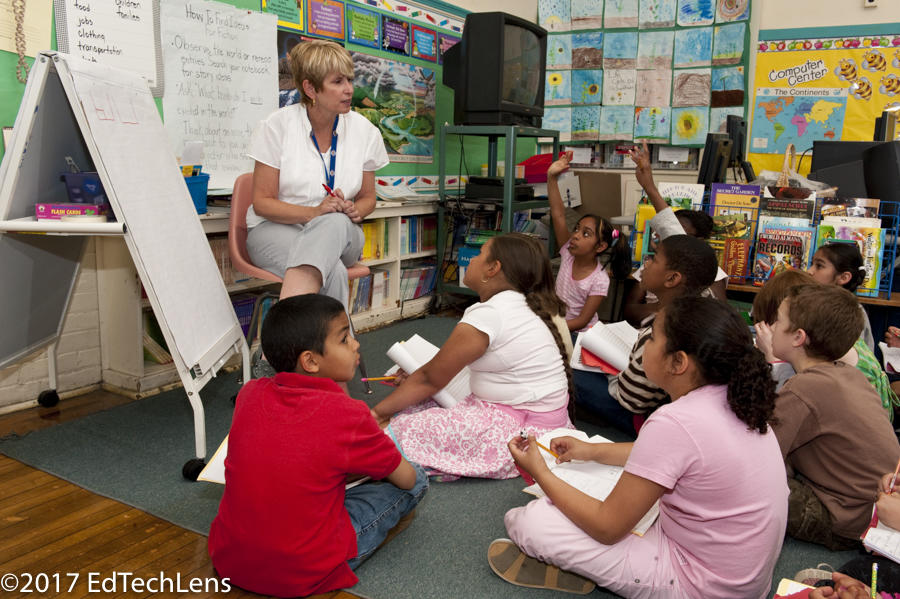
Questions Teachers Can Use to Support Students in Problem-Based Learning
In problem-based learning, the teacher is more effective serving as a facilitator rather than as a provider of solutions. Key to serving in that role is asking questions that allow students to take a more central role in their own learning.
Below are a few resources on developing effective questions.
In Problems as Possibilities: Problem-based Learning for K-12 Education, Linda Torp and Sara Sageby say that “questions are one of our best tools to increase and assess student understanding.” They provide these five types of questions that help students “think, reflect on their thinking, and consider information and consequences:”
Probe: Can you say more about that?
Challenge: How do you know that to be true?
Redirect: Before our discussion you said _________. What do you think now, Jennifer?
Goal-setting: Where do you think we can find that information?
Monitor: Do you have everything you need to report out in your group?
In this useful handout, the authors offer examples of three types of Socratic questions useful in problem-based learning: those that clarify, those that probe assumptions and that probe reasons and evidence.
The North Dakota Teaching with Technology Initiative offers this overview of problem-based learning, along with questions that prompt students to engage productively with the problem:
What do you already know about this problem?
What do you need to know to effectively address this problem?
What resources can you access to determine a proposed solution?
The development of abilities to assess the credible value of information and resources takes time and experience so even teachers of young children can help their students in this growth process. This article is useful in engaging students of various ages from K to 12 in exercises that help them learn how to determine credible sources. For example, the youngest students can start with an exercise that gives them practice in distinguishing content from ads on a website.
As students begin to understand credibility and bias – or for older students – these questions are useful:
How current is the resource/information?
How credible and accurate is it?
Is there any reason to suspect bias in the source?
In problem-based learning, the teacher is more effective serving as a facilitator rather than as a provider of solutions. Key to serving in that role is asking questions that allow students to take a more central role in their own learning.
Below are a few resources on developing effective questions.
In Problems as Possibilities: Problem-based Learning for K-12 Education, Linda Torp and Sara Sageby say that “questions are one of our best tools to increase and assess student understanding.” They provide these five types of questions that help students “think, reflect on their thinking, and consider information and consequences:”
Probe: Can you say more about that?
Challenge: How do you know that to be true?
Redirect: Before our discussion you said _________. What do you think now, Jennifer?
Goal-setting: Where do you think we can find that information?
Monitor: Do you have everything you need to report out in your group?
In this useful handout, the authors offer examples of three types of Socratic questions useful in problem-based learning: those that clarify, those that probe assumptions and that probe reasons and evidence.
The North Dakota Teaching with Technology Initiative offers this overview of problem-based learning, along with questions that prompt students to engage productively with the problem:
What do you already know about this problem?
What do you need to know to effectively address this problem?
What resources can you access to determine a proposed solution?
The development of abilities to assess the credible value of information and resources takes time and experience so even teachers of young children can help their students in this growth process. This article is useful in engaging students of various ages from K to 12 in exercises that help them learn how to determine credible sources. For example, the youngest students can start with an exercise that gives them practice in distinguishing content from ads on a website.
As students begin to understand credibility and bias – or for older students – these questions are useful:
How current is the resource/information?
How credible and accurate is it?
Is there any reason to suspect bias in the source?

